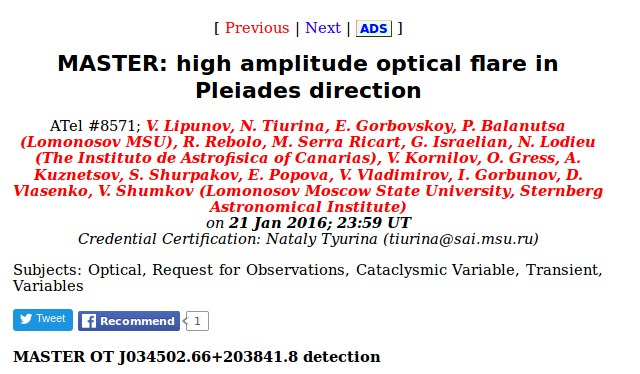
 Copyright © Michael Richmond.
This work is licensed under a Creative Commons License.
Copyright © Michael Richmond.
This work is licensed under a Creative Commons License.
On Jan 21, 2016, I was observing at the WIYN 0.9-m Telescope on Kitt Peak with a number of companions: Jen Connelly, visiting professor at RIT; graduate students Kristina Punzi and Ekta Shah; physics major Kaitlin Schmidt; and Beatrice Mueller of the Planetary Science Institute, who would be taking over the 0.9-m the following evening. We were just finishing our flatfield exposures and making a list of targets for the night when we decided to check for any "breaking news". One of the best places to find up-to-the-minute notifications of new discoveries is The Astronomer's Telegram.
Lo and behold, one of the newest items was this promising headline:
Hey -- this was less than 3 hours old! Maybe we were some of the first people seeing the message with a chance to confirm it.
We quickly moved the telescope to the position of the transient source and started taking pictures. The MASTER team had provided finding charts, showing the reference image from a month earlier (rightmost panel below) and two images of the new sources (center and left panels below). The orientation is the standard "North up, East left".
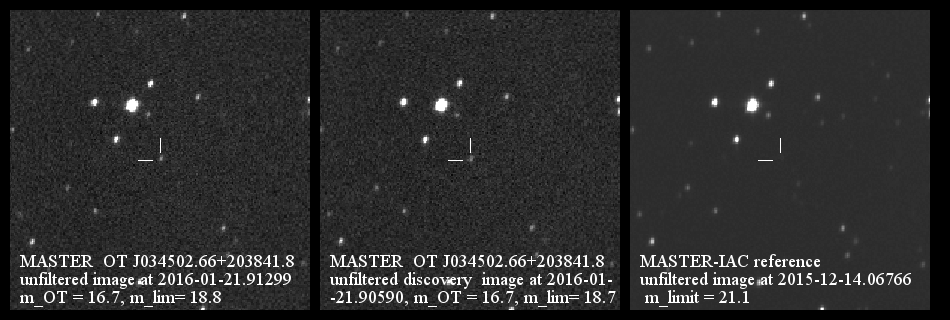
After acquiring a 300-second image in V-band, we started comparing our picture (left) to the reference images (a scaled version of one is shown at right).
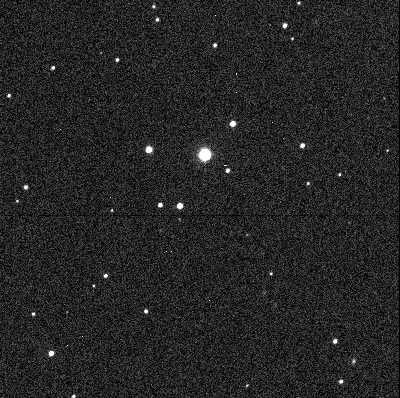
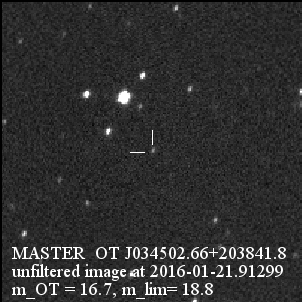
Q: Do you see the new object in our image?
We were stumped. The new object just didn't appear in our image.
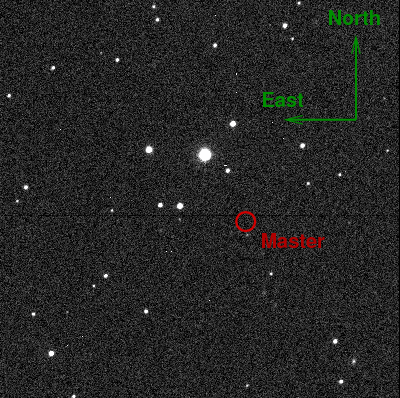

However, there was an object in our image which did not appear in the MASTER pictures.
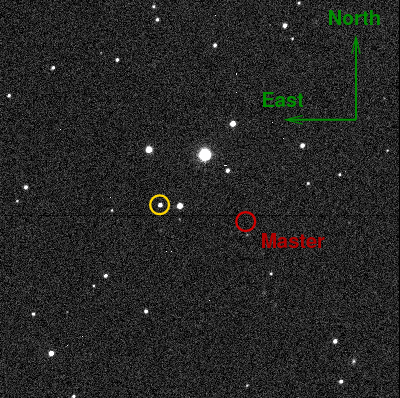

Had the initial flare disappeared, and a new flare appeared just a short distance away? That was ... possible, but seemed unlikely.
Q: Is there any other explanation for the observations?
Yes -- perhaps this "flare" is actually due to a moving object: an asteroid.
But to check this hypothesis, we took additional images. Here's our original V-band image (left), and a B-band image taken about 23 minutes later (right).

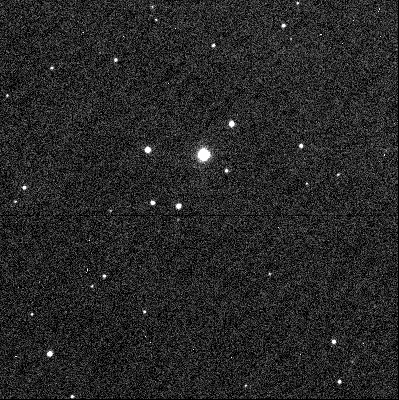
Do you see any movement? Perhaps it would help to "blink" these two images. Click on the image below to start the animation.
Aha! Yes, the new object is moving. A quick and very rough comparison of its position in our two images showed it to have moved
direction motion interval arcsec/hour
------------------------------------------------------------------------
East: about 5.6 arcseconds in 23 minutes = ??
North: about 2.2 arcseconds in 23 minutes = ??
------------------------------------------------------------------------
Can you fill in the missing speeds?
Well, this would be reasonable to a typical main-belt asteroid. Were there any known asteroids in this part of the sky, we wondered? Or could this be a new discovery?
A very nice tool for observers is provided by the Minor Planet Center. The MPChecker page will take an (RA, Dec) position in the sky and check to see if any known asteroids happen to be close to that position. So, we typed in our position, and the tool returned the following information:
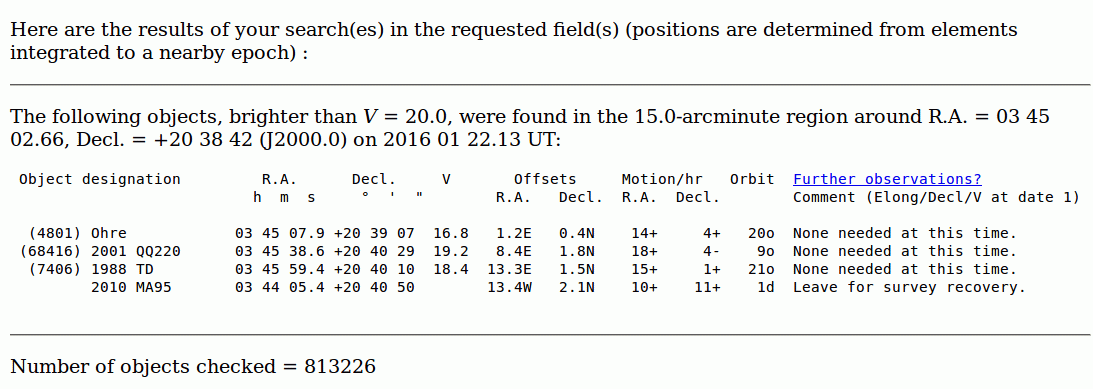
At this point, the jig was up.
This was not the flare of some faint star in the Pleiades
(which would be interesting),
or the titanic explosion of a supernova in some very distant
galaxy, far, far beyond our Milky Way (which would
be even more interesting).
No, this was very likely to be the asteroid (4801) Ohre,
which was discovered in 1989 by the Czech astronomer Antonin Mrkos
and
Named for a Czech river rising in Germany near the Czech border
and continuing through the towns
of Karlovy Vary, Zatec and Louny to
its confluence with the Labe river.
Name proposed by Z. Moravec. [Ref: Minor Planet Circ. 34340]
No big deal. Astronomers have been fooled by the "vermin of the skies" for many decades. It happens.
However, one can make an effort to avoid mistaken identifications. For example, taking several images of a new object and comparing them can reveal the motion of an asteroid. The MASTER team did properly take an additional image about 10 minutes after their first detection. Click on the picture below to blink their two images.
Rats! The combination of a small plate scale (yielding large pixels) and relatively small telescope (0.40 meters in diameter) mean that the position of the asteroid is not particularly well defined. It is difficult to see any change in position between these two images.
Oh, well.
We thought it would be a good idea to warn other astronomers that they should not waste any time investigating this particular alert, so we wrote a little note of our own and submitted it to the The Astronomer's Telegram, too.
 Copyright © Michael Richmond.
This work is licensed under a Creative Commons License.
Copyright © Michael Richmond.
This work is licensed under a Creative Commons License.